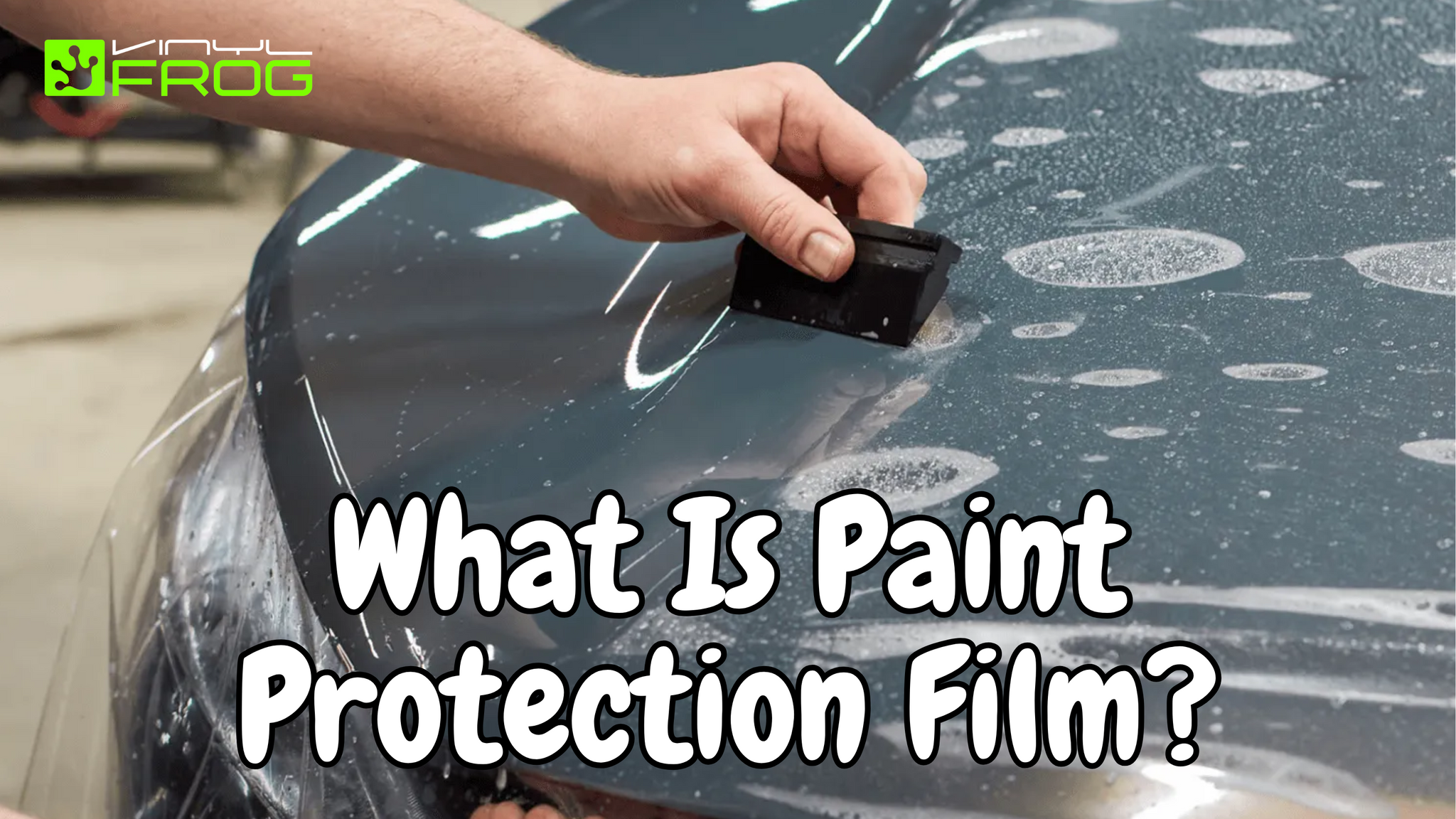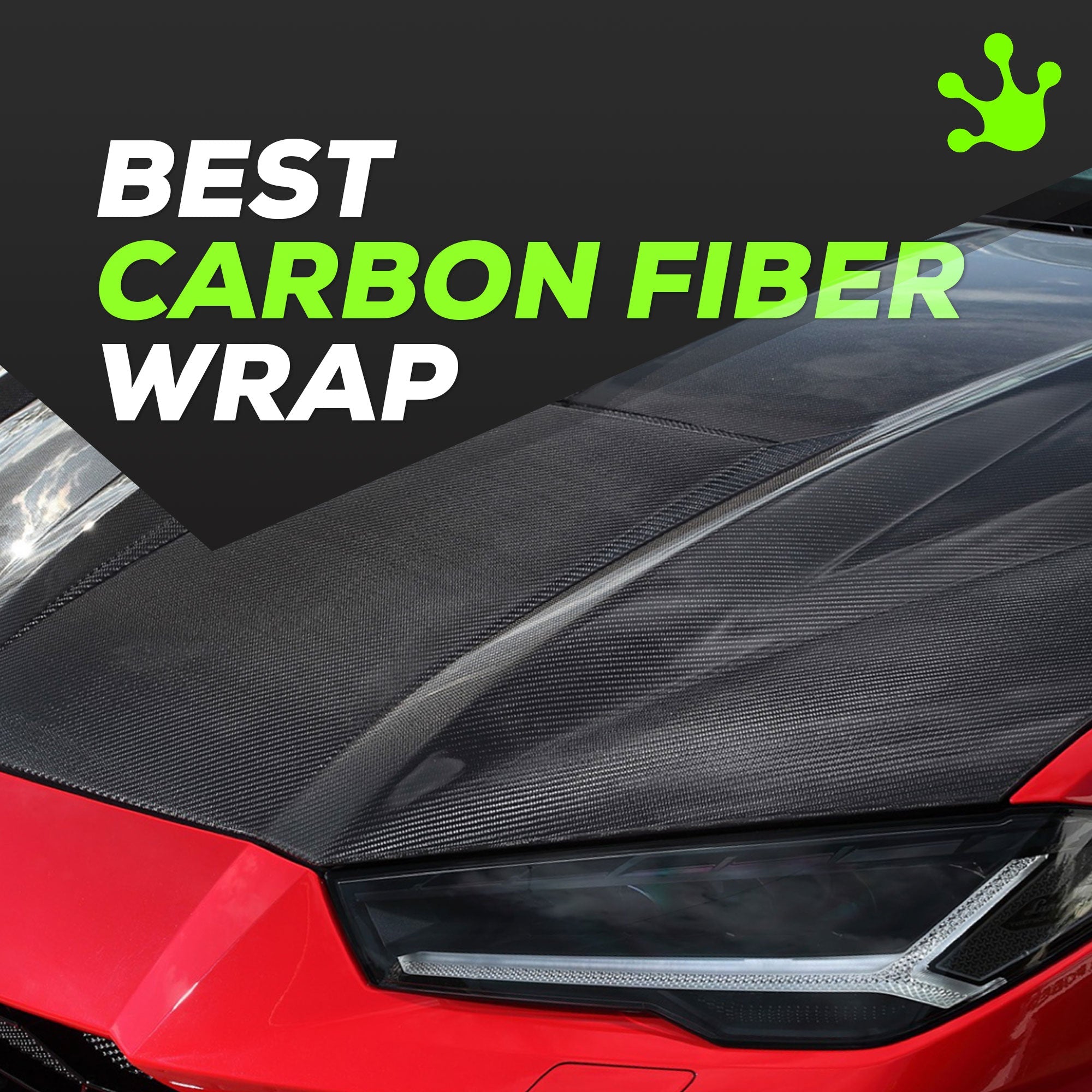Posted By Vinyl Frog On July 17, 2025
Paint Protection Film (PPF) VS Ceramic Coating

Paint protection is a must-do if you want to keep your car looking like new. The finish of your car might become dull over time due to reasons like:
- Scratches
- Sun exposure
- Bird droppings
- Temperature extremes
- Acid rains
Because of this, more car owners choose intelligent solutions like ceramic coating and PPF. Although they work differently, PPF and ceramic coating both preserve the appearance of your car. In this blog, you will get to know about Paint Protection Film (PPF) vs. Ceramic Coating, so you can make informed decisions!
What Is Paint Protection Film?
Paint Protection Film is a clear sheet applied to the vehicle’s paint to protect it against scratches, stains, and minor damage. It works as a shield to block road debris, bug splashes, and rough weather from touching your car paint.
PPF is available in different styles as well. You can choose a self-healing one that fixes minor scratches when heated, or you can stick with a standard clear one.
A lot of car owners apply PPF to areas such as the front bumper, hood, side mirrors, door edges, and headlamps that are exposed to the most impact. These are the parts that often suffer the most damage from regular use.

What Is Ceramic coating?
A ceramic coating is a liquid polymer applied to the outside of a car to form a protective, hydrophobic layer by chemically bonding with the original paint. It increases the surface's resistance to the following:

Ceramic coating is clear and doesn’t change the car’s colour. It does not protect from big scratches, but it keeps your vehicle shiny and much easier to clean. It penetrates the tiny pores in your car paint and bonds at a nano level.
The car must be thoroughly cleaned and polished to provide a smooth and dirt-free surface before ceramic coating is applied. The coating is then sprayed onto the surface or manually applied with an applicator pad. After putting it in, you must wait for it to combine with the paint.
Ceramic coatings for vehicles come in several types, broadly categorized by their composition and application.
- Silica-Based Coatings: These are made with SiO₂, which gives strong protection and a glossy finish. These are the most common and known for their durability and hydrophobic properties.
- Polysiloxane Coatings: These coatings offer good gloss and UV protection and serve as a balance of protection and aesthetics.
- Nanocoatings: These coatings are very thin but provide high levels of protection. They can also improve a vehicle's appearance.
- Graphene Coatings: These coatings utilize graphene, a carbon-based nanomaterial, to enhance durability and longevity.
Key Differences Between Paint Protection Film (PPF) And Ceramic Coating
Even though both PPF and ceramic coating protect your car, they do it in different ways.

- PPF is thicker and stronger. It protects the car from actual physical damage, like stones hitting the car at high speed or people brushing against it. Ceramic coating, on the other hand, is delicate and more focused on protecting from chemical and environmental damage.
- In terms of appearance, ceramic coating gives a more noticeable shine. Ceramic coating also gives your car that water-beading effect, which many people love. On the other hand, PPF can be either glossy or matte, depending on the type you choose.
- Another important difference is that high-end PPF can repair itself from small scratches, but ceramic coating does not have any self-healing ability.
- You need trained professionals to install PPF, while ceramic coating is easier to apply at home, but still better if done by experts.
Durability And Lifespan
PPF usually lasts longer than ceramic coating. A good quality PPF can last between five to ten years if properly maintained. Ceramic coating generally lasts between two to five years, depending on the product used and how well you maintain your car.
Of course, both products need some level of maintenance. You should still wash your car regularly and avoid using harsh chemicals. In areas with extreme heat or heavy rainfall, both PPF and ceramic coating may wear out faster.

Cost Of PPF VS Ceramic Coating
PPF (Paint Protection Film) is pricier than ceramic coating, especially for full-body coverage, but many opt for just high-impact areas to save costs. Ceramic coating is more affordable, especially DIY, though professional applications offer better results.
Full-body PPF can range from $3,000 to $7,000, while ceramic coating typically costs $500 to $2,000 depending on the vehicle and service provider.
Both are long-term investments that protect your car’s value, reduce repainting, and lower detailing costs, making them worth the initial investment.

Which One Is Right For You?
It really depends on what you need and how you use your car. If you drive a lot, especially on highways, or live in a dusty area, PPF is a better option. It gives strong protection against scratches, stone chips, and road damage.
If you just want your car to look shiny and stay clean with less effort, ceramic coating is a great choice. It’s easier on the pocket and works well for cars you use every day.
Many people with luxury or brand-new cars go for PPF to keep the paint looking perfect. Some even combine both. They put PPF on the front bumper, hood, and mirrors, then add ceramic coating on top of the whole car. That way, they get the best protection and a beautiful shine.
Conclusion:
In the end, both PPF and ceramic coating offer great protection, just in different ways. One is like a strong shield, while the other is like a shine booster. If you understand your car’s needs, your driving habits, and your budget, choosing the right one becomes simple. Whether you go for PPF, ceramic coating, or even both, the goal is the same: to keep your car looking fresh, clean, and well cared for just the way you like it.











